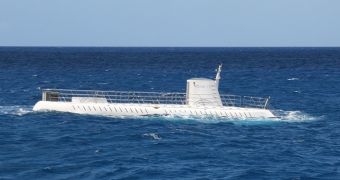Global positioning system technology is all well and good for ground and air-based travel, but not so much for submarine craft, which is why alternative localization technologies are being researched.
As it happens, DSTL (the UK's Defence Science and Technology Laboratory) has figured out a new way to navigate underwater.
For a long time, submarines have had to settle for radar and sonar, and a system based on accelerometers that record a submarine's movements from a last known position.
This method needs the submarine to surface periodically though, as to plot a course it needs to get a GPS fix from time to time.
But now they'll be able to use Quantum Positioning to make a new sort of accelerometers. These quantum accelerometers would use lasers and supercooled atoms of rubidium to navigate in all three directions.
The problem is that the sensitivity of quantum positioning could confuse the accelerometer rather easily, when passing over an underwater mountain whose gravity would attract the sensor to the west instead of east.
Still, it's all a matter of time before the research is perfected, at which point submarines will no longer risk going a kilometer or more off course just by failing to surface once a day.
The creation of the supersensitive quantum accelerometers was inspired by the discovery that lasers can trap and cool a cloud of atoms placed in a vacuum to a fraction of a degree above absolute zero.
The atoms achieve a quantum state easily affected by an outside force once they've been chilled. A second laser beam can be used to track them in that situation.
Sadly, all changes caused by even the tiniest perturbation are tracked that way, so calculating the size of the outside force (gravity as it were, plus the movements as the sub swings around in the sea) can return faulty results.
Still, the DSTL team expects to have such a set-up ready for real-world use, even if quantum positioning will never be viable above the water.
Presently, the DSTL has a single prototype, a "1-metre-long shoebox" as they call it. It records one axis of motion and will be tested next year, after which more supercooled rubidium atoms and lasers will be added, to enable three-dimensional movement.
Let's just hope that no big wars start that make submarines a necessity for armed conflict. Having them patrol the "borders" of claimed seas and ocean segments is enough.

 14 DAY TRIAL //
14 DAY TRIAL //